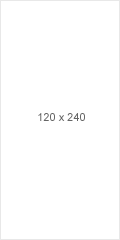Learning About Social Class: A Global Issue Today
Edith W. King, Educational Sociologist
Sociologists recognize that inequalities spring from the social structures and social processes that create, maintain, or change the individual’s circumstances. Life chances that create inequalities are defined as the conditions of material existence. These conditions include food, clothing, and shelter. This also takes in the quality of life issues such as education, future employment and career opportunities. It includes lifestyle, access to health care, environmental issues, and social and civic participation. Meighan and Harber point out that social class has continued to be a highly ambiguous concept. They note that “the links between social class and education in the UK have been researched frequently and persistently.” (2007, p. 389)
Potent Forces of Social Class: When talking or writing about children and families Roland Meighan and I often discussed how this topic involved touching on the wider social class structure of a society or a nation. It is well known that the economic wherewithal of a group or a family is tied to accumulation of material goods. What is treasured and valued comes from the worth imbued to the material good, such as cash, precious metals and jewels, stocks, bonds, properties (real estate), through a cultural definition of what is valuable. Further, accumulation of wealth and status means power and superiority over others. Social and economic status tends to give one group power over another and leads to attitudes that one ethnic or racial group is inherently better than another because it is richer and holds a higher social status. Material wealth not only endows an individual or a group with greater social status; often it is accompanied by wider political power.
Socioeconomic status (SES) is characterized as a measure that combines a person’s education, occupation and income in order to derive that person’s ranking in the social structure. This definition brings us to another concept in sociological thought connected with social class and socioeconomic status or SES; it is the word “classism.” Classism is defined as discriminatory attitudes and actions towards individuals based upon their social class affiliation. Classism is considered a manifestation of discrimination and prejudice that arises from the wide inequities in the distribution of wealth in a society or nation-state. Sociologists depict most societies as consisting of the following major socio-economic classes: upper middle; lower middle; working class and a growing group labeled the underclass, those living in continual poverty over generations.
In recent years the inequities in the distribution of wealth have been so dramatic that the number of those considered to be middle class in more affluent nation-states have been shrinking. Those living on the edge of poverty, the lower working class and the underclass, have grown twice as rapidly as the people considered more affluent. This situation points to a widening gap between the rich and the poor. Social scientists, social workers, psychologists, medical practitioners, all, concur that the major cause of inequality in childhood is the condition of living in poverty. In other words, those children and families are living in lower class or underclass groups.
Children’s Literature and Classism: Through the books they read, through films and videos, children are introduced to the concept of social class, classism, and the inequalities created by social class affiliations. That vastly popular series, the Harry Potter books, as well as the films, exemplifies how children can learn about the impact of social class. The publishers of the Harry Potter books, Scholastic Publishers, estimate that 325 million copies of the first six books were sold by 2007 in the United States alone including,: Harry Potter and the Sorcerer’s Stone; Harry Potter and the Chamber of Secrets; The Prisoner of Azkaban; and The Goblet of Fire.
In the Harry Potter series, the Weasley family is continually described as a large family with limited financial resources. Particularly, Ron Weasley, Harry Potter’s comrade at the Hogwarts School of Witchcraft and Wizardry, is teased for his family’s inability to provide new robes, a fine wand, and a suitable owl for this fourth son to attend Hogwarts.
More evidence of the role of social class appears when we are introduced to Harry, in the first book, Harry Potter and the Sorcerer’s Stone. He is pictured as a penniless orphan despised by the Dursleys, who are portrayed as the typical British middle class family, living on Privet Drive in their spotlessly clean home with manicured lawn. However, when Harry learns that his deceased parents have left him a small fortune and he can finance his schooling at Hogwarts, and not have to depend on others, his social status changes. Subsequently, Harry is treated with more respect by the Dursleys and allowed to have a bedroom to himself, rather than living in the closet below the stairs in the family house.
Another situation in the Harry Potter books that informs children about the power of influence and wealth on social class status is J. K. Rowling’s portrayal of the Malfoys, both Draco, the son, and Lucius, the father. As a longstanding and wealthy wizard family, the Malfoys can be supercilious in stating their views about the social standing and monetary holdings of other characters in the Harry Potter books. Draco Malfoy refers to various characters as servants, has little regard for some of the teachers, and continually points to the Weasley family as being poor, of low status, and having too many children. An underclass appears in the Harry Potter series as well, in the form of the house elves, who work unseen and unpaid, living in the lower levels of the Hogwarts School or in the homes of wealthy wizard families; in reality, an enslaved people. (Heilman and Gregory, 2003)
Awareness of social class and classism in children’s literature is an area of the language arts and literacy that parents and teachers can access. Once an educator is alerted to this subject matter, the presence and the ramifications of social class, social mobility, and social inequality become apparent, even in classical fairy tales such as Cinderella and Jack and the Beanstalk.
Children and Social Class Inequality in the UK: Britain is a nation that has been deeply class-based for centuries. Early on British-born children are aware of their family’s social class status, religious affiliation and relative degree of affluence. In the first decades of the 21st century it was reported that Britain’s population numbered around 60 million. Refugees and asylum-seekers have been arriving every month adding millions of new immigrants to the British population. Many of these new immigrants are leaving financial stress in Eastern Europe or escaping armed conflicts in Syria, Iraq and West Africa. Furthermore, Muslim communities in Britain are growing. These more recent immigrants continue to struggle for a place in British society, much as those do in the U.S. Some of these people are highly educated and bring specialized skills and experience to ease their socialization and enculturation into the UK. However, other refugee families, their children, and single young adults are poorly educated due to the continual trauma of fleeing persecution and violence. Lack of education directly affects social class status.
Educational sociologists have reiterated that many middle class, as well as working class, parents share anxieties about social and educational inequalities imposed on their children. (Apple, 2004; Meighan and Harber, 2007) For example, young U.K. children were questioned about their understandings of social class privilege and access to enhanced educational opportunities. Some children insisted their education was better than ‘poor’ children’s schooling because their families paid tuition to attend the school. It was better because it cost money. This is an example of how children are socialized into the notion of the superiority of tuition-based schooling. These attitudes may reproduce tendencies to reject the recent waves of refugee families and asylum seekers.
In the summer months of 2015 the media reported that over 100,000 refugees, the majority from Syria and Iraq, as well as other Middle Eastern countries, coming by flimsy boats across the Mediterranean Sea, landed in the islands off Greece. Numbers of these refugees told reporters they were escaping from the terror attacks of ISIS (the Islamic State). Among the refugees were over 4000 children, some of them unaccompanied. An assessment by Save the Children (savethechildren.org), a British non-governmental organization (NGO), warned that these young people were at risk of exposure to various sicknesses, to trafficking, sexual exploitation and physical abuse when sleeping alone or pressed into cramped detention quarters. Furthermore, international media described the desperate situation of the Syrian refugee families who fled to the cramped refugee camps in Jordan. Parents with young children emphasized that their little ones cannot remember life before violence and homelessness. The toddlers suffer from seizures, malnutrition, and diarrhea. Medical care is severely limited. It is evident that wars and governmental financial instability in countries such as Greece and Egypt, in Eastern European nations, and across Africa, are continuing to create devastating problems for humanity.
Learning and teaching about social class and the effects of classism are vital topics for our contemporary curriculum. In this article I endeavored to point out how global terrorism intensifies social inequality. With the knowledge of the power of social class status (SES) we can bend our efforts towards ameliorating the circumstances of inequality in the lives of children growing up in times of terrorism. Here follows some suggestions for thinking and learning about social class:
,,. How has social class affiliation affected your students and those that you know ?
…What stories, plays or films can you recall where social class was important in the plot?
… Discuss the impact of social class and social inequality with others. What responses and concerns can you list from these talks?
… Do you discuss topics about social class or socio-economic status (SES) with your children and students? Have you considered that stories such as the Harry Potter series and Cinderella, for example, have social class implications?
Edith W. King is an educational sociologist and American Sociological Association emeritas professor. King has written extensively on diversity and gender education, international and cross-cultural education, and qualitative research in global perspectives. Among her many books is the recent Encounters with Social Thought (Amazon:Kindle 2012) and Social Thought on Education (Amazon:Kindle 2011). Edith King serves on the advisory board of numerous professional journals and educational publications and is the chairperson of the Worldmindedness Institute.
References
Apple, Michael W. (2004) Official Knowledge. N.Y. Routledge,
Heilman, Elizabeth E. & Anne E. Gregory. (2003) “Images of the Privileged Insider and Outcast Outsider.” In E. Heilman, (Ed.) Harry Potter’s World. New York: RoutlegeFalmer, pp. 241 – 260.
King, E. (2014) Teaching in an Era of Terrorism. 4th edition. Amazon: Kindle. .
Meighan, Roland and Clive Harber. (2007) A Sociology of Educating. London, UK: Continuum.
Save The Children. www.savethechildren.org.uk
Strimel, Courtney B.: “The Politics of Terror: Rereading Harry Potter.” Children’s Literature in Education, Vol. 35, No. 1, March 2004, pp. 35-52.
Van Arsdale, Peter. (2006) Forced to Flee: Human Rights and Human Wrongs in Refugee Homelands. Lanham MD: Lexington Books.







